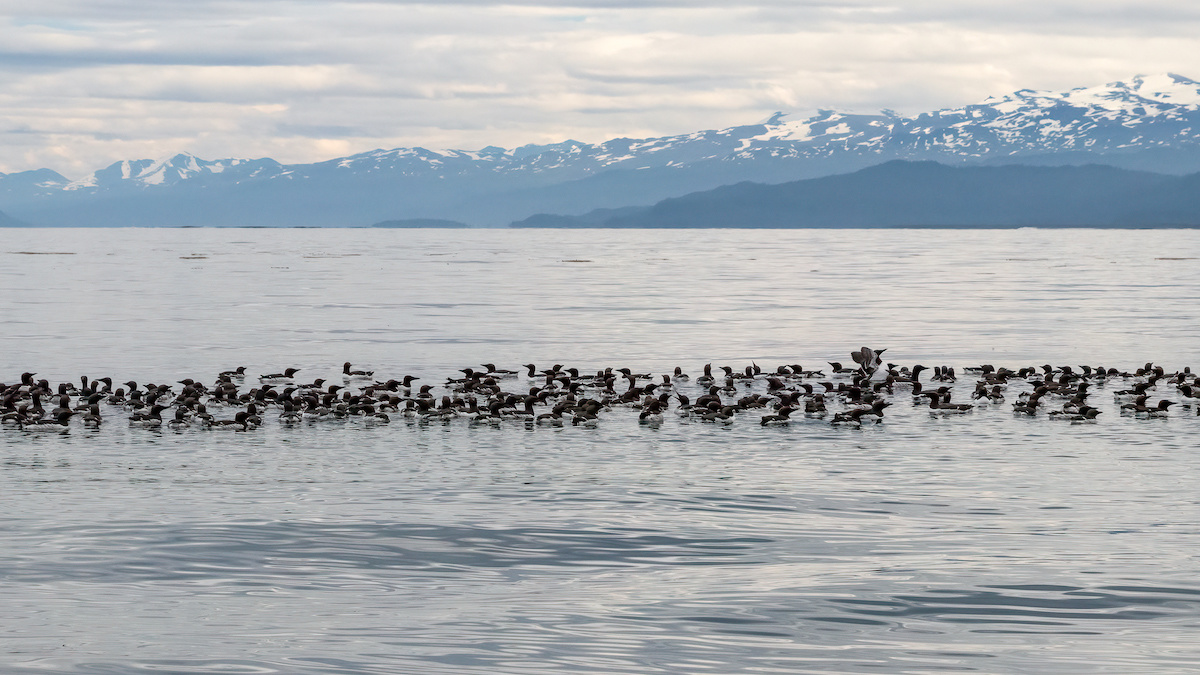
Death of 1 Million Seabirds Tied to Massive ‘Blob’ of Hot Water in the Pacific

The common murre population in Alaska has been decimated by an ocean heatwave. Linda Burek / iStock / Getty Images Plus
An expanse of uncommonly warm seawater in the Pacific Ocean created by a marine heatwave led to a mass die-off of one million seabirds, scientists have found.
According to a study published in PLOS One by the University of Washington, the marine heatwave began in 2013, and grew stronger between 2015-2016 due to irregular conditions from the weather phenomenon El Niño.
The heatwave created a patch of much warmer seawater in the northeastern Pacific that stretched for 1,000 miles — parts of which reached temperatures 10.8 degrees Fahrenheit higher than usual, CNN reported.
Researchers termed it “the blob.”
As the blob reached its peak between mid-2015 and 2016, more than 62,000 common murres — a species of seabird that feeds on small fish and is common up and down the west coast of North America — washed up dead on the shores of California, Oregon, Washington and Alaska, The Guardian reported.
The researchers believe that the murres likely died of starvation after the blob increased competition for the small fish they feed on, The BBC reported. And because most birds that die over the ocean never wash ashore, the researchers believe the die-off reached closer to an unprecedented one million common murres.
Larger fish such as salmon, cod and halibut rely on the same prey as the murres. But since fish are cold-blooded and can’t self-regulate their body temperature, the warmer waters boosted their metabolic rate and the amount of energy they needed for survival. These conditions required the larger fish to eat more than normal, reducing the availability of prey for the murres, which typically need to eat the equivalent of half their body weight per day.
The resulting die-off was among the largest on record, the researchers said. Most of the birds washed ashore in Alaska, where they were found in densities reaching 4,600 carcasses per kilometer along part of the state’s southern coast.
The murre population was so affected that by 2016, 12 breeding colonies had failed to produce any chicks and the population still hasn’t replenished, The Guardian reported.
“It remains to be seen when (or whether) murre populations in Alaska will recover from the heatwave in light of predicted global warming trends and the associated likelihood of more frequent heatwaves,” the researchers said. According to the United Nations, climate change is projected to make marine heatwaves more frequent.
The University of Washington team has already found another marine heatwave developing off the coast of Washington, while another closer to New Zealand has reached 4,000 square miles and can be detected from space, CNN reported.
The blob caused die-offs in several other animal populations as well, including sea lions, baleen whales and tufted puffins. These die-offs were likely due in part to a drop in the populations of plankton that feed many organisms in the food chain, as the warmer water has less oxygen and essential nutrients to support life, USA Today reported.
The warmer temperatures also spawned the largest harmful algal bloom in recorded history, which contributed to the die-offs and led to significant financial losses for fisheries in the affected area — though none of the losses reached the severity of the murre die-off.
“The magnitude and scale of this failure has no precedent,” lead author John Piatt, a research biologist and an affiliate professor at the University of Washington, said in a press release. “It was astonishing and alarming, and a red-flag warning about the tremendous impact sustained ocean warming can have on the marine ecosystem.”
- New UN Report Documents Effects of Climate Change on Earth's ...
- Vanishing sea ice in the Arctic could shake up seabird migrations
- Thousands of seabirds starved to death in the Bering Sea — and ...
- Seabirds Aren't Keeping Pace With Climate Change, Scientists Warn
- Ocean heat waves like the Pacific's deadly 'Blob' could become the ...

 233k
233k  41k
41k  Subscribe
Subscribe 